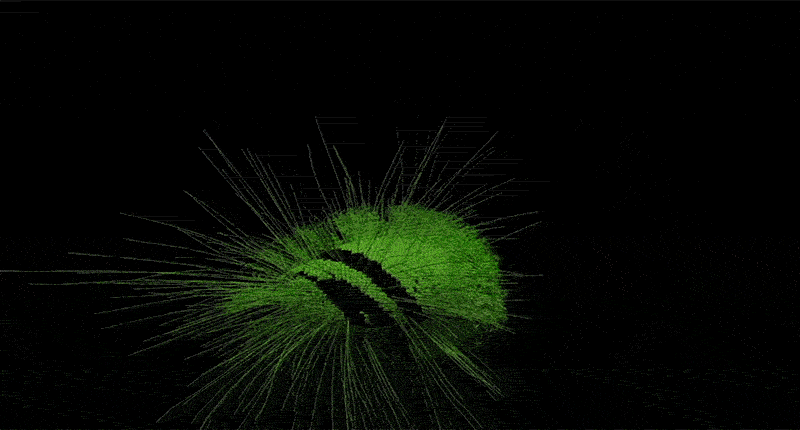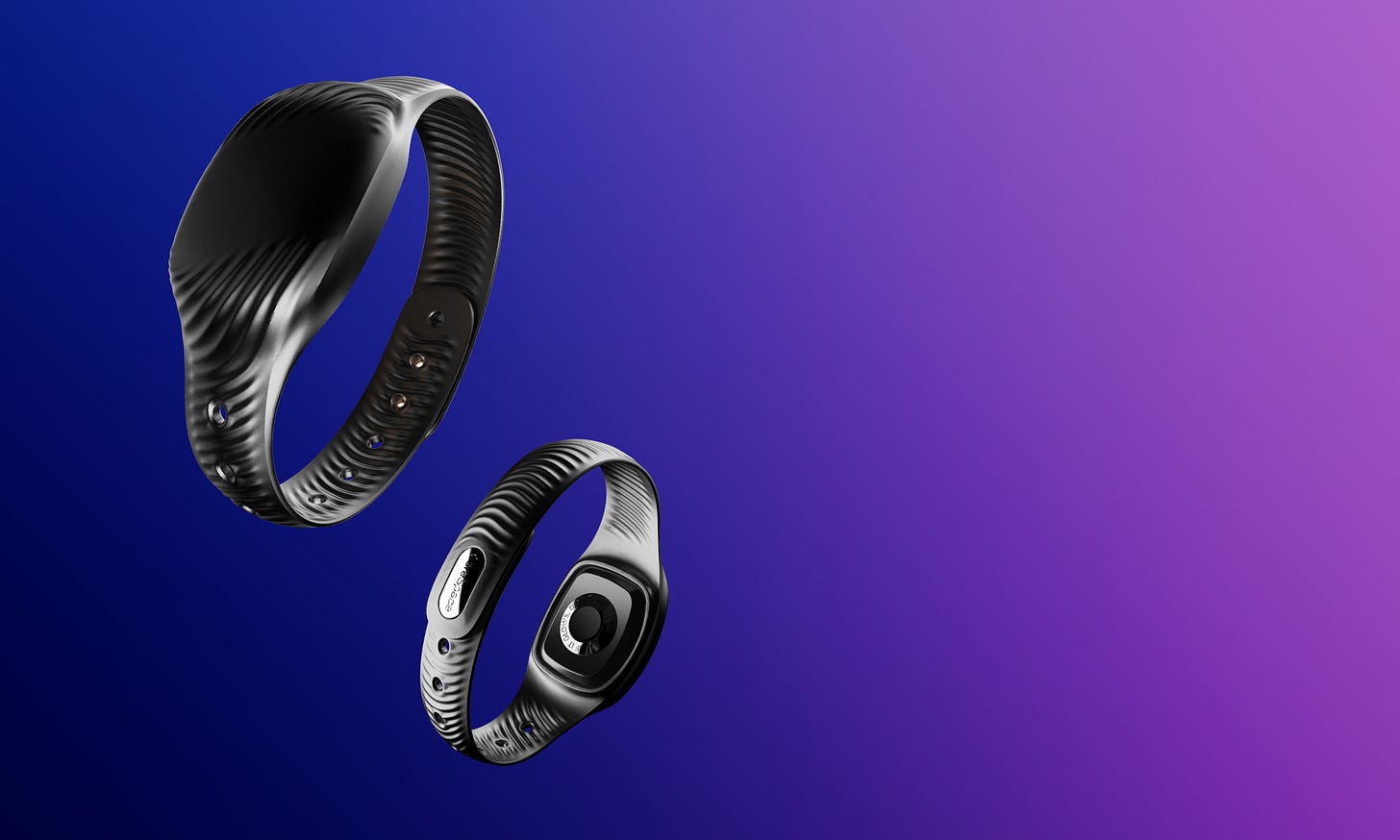Design at all Scales Through Computational Craftsmanship
Interview with Arthur Azoulai + Diego Taccioli– Slicelab for CDFAM NYC 2024
Can you tell us about your work at Slicelab and how your background in architecture influences your approach to computational design at different scales, and vice versa?
At Slicelab, we’ve been fortunate to work across a range of industries, allowing us to navigate different scales with ease. Over the last several years alone, we’ve had the privilege to work on various projects within footwear, health tech wearables, sports equipment, achievement awards, and furniture.
Our diverse body of work enables us to take on ambiguous problems from every angle, continuously informing our perspective. Our foundation in architecture has instilled a structured design methodology that we bring into computational design.
We begin by understanding the perceived limitations of materiality and scale—both critical factors in shaping the framework of our parametric scripts. We then establish the right dials to turn to really push the limit of what can be done.
Conversely, when scaling up our 3D print designs to larger objects, like our furniture collections, that same architectural thinking influences the computational process, ensuring continuity between the digital and physical worlds. This balance lets us fluidly move between disciplines while maintaining a design-first approach.
Your presentation at CDFAM will highlight the integration of computational design with fabrication techniques. Architect Juhani Pallasmaa has spoken about the importance of ‘learning through the senses,’ emphasizing tactile engagement in the design process. How do you apply this concept in digital craftsmanship, given the lack of direct physical interaction in digital design?
Although digital design lacks physical interaction, we remain deeply rooted in material exploration through prototyping.
At Slicelab, we’re obsessed with marrying the digital and physical through Additive Manufacturing. The iterative process of moving rapidly from design to print shortens the feedback loop, letting us “learn” through tactile references—whether it’s through the weight, texture, or overall feel of the printed object shortening the product development timeline.
This approach allows us to introduce a sensory layer to our digital craftsmanship, making sure our designs aren’t detached from the physical reality they inhabit.
When we first started prototyping, we built our own FDM machine, but now we find it much more efficient to outsource our production to a network of trusted manufacturing partners. This gives us access to a wider range of materials and technologies, allowing us to focus more on the digital design side of our work.
Can you discuss some of the software tools you use, both off-the-shelf and those you’ve developed in-house, and how each of these tools influences the design process and the final outcome?
Our toolkit at Slicelab is expansive, but Rhino/Grasshopper is our primary platform.
Its flexibility in having easy to use form finding design tools at hand and it allows us to develop custom computational workflows that can evolve with each project.
We often build off previous computational strategies, letting us quickly achieve different outputs while maintaining full control over the final result.
For more sculptural designs, we prefer Maya, which gives us freedom in form development. For computationally heavy designs that involve intricate lattice structures and complex boolean operations, nTop provides the power we need.
Each tool informs the process, driving both aesthetic and functional outcomes. We also make it a priority to stay current with the latest digital design trends, consistently exploring new plugin developments to see how we can integrate them into our workflow. That being said, the software we choose for a project is always deliberate, based on the final vision we want to achieve.
I understand you’re using 3MF to communicate additive manufacturing data for client projects. Can you tell us about the type of metadata you’re including and the value it brings to both you and your clients?
We’re big advocates of 3MF files. Not only do they drastically reduce file size, but they allow us to embed valuable metadata—such as geometry tests, client details, and copyright info.
This metadata creates a vital communication bridge, ensuring that our designs are produced as intended. It also provides traceability, which is crucial in additive manufacturing, especially at scale. For both us and our clients, this level of detail reduces errors, guarantees consistency, and reinforces the integrity of the final product.
Can you provide examples of client projects you’ve worked on, and explain how your self-directed design experiments have informed your approach to these projects?
Our experimental work plays a critical role in informing client projects. For instance, when tasked with designing a minimalistic concrete table, we leveraged a series of structured design experiments to fine-tune the manufacturing process.
By pushing fabrication parameters in controlled tests, we honed in on the final design that maintained both the aesthetic vision and manufacturability. This iterative experimentation allows us to make informed, tactile decisions—again, tying back to Pallasmaa’s notion of ‘learning through the senses.’ These experiments fuel our innovation, ensuring client projects are always at the cutting edge.
These experiments can be as straightforward as strapping on our own snowboard binding designs and riding through tough terrain, or simply standing on the freshly poured concrete table. We’re not afraid to get our hands dirty, fail, and start again. That mindset fuels our confidence to tackle any challenge.
What would be a dream project for you, and which fabrication techniques would you most want to utilize in bringing it to life?
A dream project would be an expansive architectural structure utilizing advanced 3D printing techniques and metamaterials. It would be an opportunity to fully integrate computational design with traditional craftsmanship, creating a completely new spatial experience.
On the other hand, we’re currently working on something quite close to a dream project—our Freeform Sports padding system, now used in NCAA athletics. It’s a project realized entirely through 3D printing, where every aspect of the design is tunable. Having complete control over the design and fabrication process, all within a single digital file, has been both challenging and rewarding.
What do you hope the audience will take away from your presentation, particularly in terms of engaging you with their own projects, and what are you looking forward to gaining from your participation at CDFAM?
We hope the audience walks away with a deeper understanding of how computational design for digital fabrication can be intertwined in a way that serves, rather than drives, the design process.
We’re a design studio first, and the tools we use—whether computational or fabrication—are there to elevate our work, not define it. Our obsession with digital craftsmanship, how form can impact function, and the tactile experience remains at the heart of everything we do.
We’re looking forward to engaging with like-minded creators at CDFAM, exploring new avenues for collaboration, and pushing the boundaries of digital craftsmanship together.
Connect with Arthur Azoulai + Diego Taccioli – Slicelab at CDFAM NYC, 2024.
CDFAM Computational Design Symposium brings together leading experts in computational design from industry, academia and software development for two days of knowledge sharing and networking, the next event taking place in Brooklyn NYC, Oct. 2-3, 2024.
Over 30 speakers at the event include representatives from NASA, Nervous System, IDEO, Slicelab, Sandia National Labs, KPF, HP, Carbon, nTop, Siemens Energy, Ocado, Autodesk, Neural Concept and more.
Recent Posts
Educational Discount for CDFAM NYC 2024
The CDFAM Computational Design Symposium series brings together leading engineers, designers, architects, software developers, and academics focused on computational engineering and design at all scales.
What is Generative Engineering?
Can you introduce us to Generative Engineering, how your backgrounds have influenced the direction of the company and what it is you offer as a software or service?
What is 'Differentiable Physics' & How Can 'Scientific Machine Learning' be Used to Solve Multi-Objective Engineering Problems?
Could you provide an overview of Pasteur Labs and the Institute for Simulation Intelligence, your business model and the type of work you focus on?











